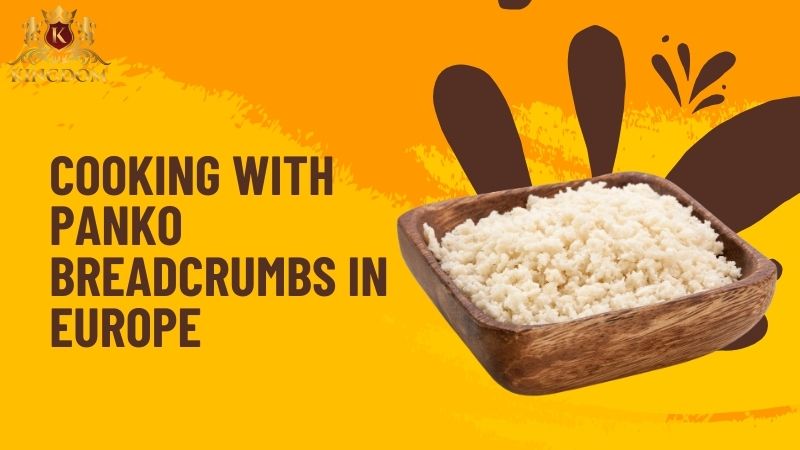
If you’re looking to elevate your culinary creations with the perfect crunch, cooking with panko breadcrumbs in Europe is gaining serious traction in professional kitchens and home cooking circles alike. Known for their light, airy texture and superior crispiness, panko breadcrumbs are a Japanese staple that has been embraced globally for their versatility. Whether you’re preparing baked dishes, deep-fried delicacies, or oven-crisped vegetables, the right technique makes all the difference.
This guide covers expert tips for achieving crispy perfection with panko, and explores how this trending ingredient is influencing kitchens far beyond Japan — including the rising interest in panko breadcrumbs in New Zealand.
What Makes Panko Unique?
Panko differs from traditional breadcrumbs in both texture and production. Made from crustless white bread that’s processed into airy flakes and then dried, panko doesn’t compact like traditional breadcrumbs. The result? A crispier, lighter, and more delicate coating that absorbs less oil during cooking.
In European kitchens, this has opened up new possibilities for everything from elevated pub classics to plant-based dishes. It’s no wonder that cooking with panko breadcrumbs in Europe has become a growing trend in recent years.
Choosing the Right Panko
Not all panko is created equal. When sourcing panko for your kitchen, look for:
-
Flake Size: Larger flakes offer more crunch and are ideal for cutlets or croquettes.
-
Color: Classic white panko is preferred for its neutral appearance, while golden varieties give a toasty finish.
-
Ingredient Integrity: Ensure it’s made from quality bread without fillers or preservatives.
At Kingdom Import and Export, we supply premium-grade panko suitable for commercial and home kitchens alike, ensuring consistency and performance across a range of dishes.
Tips for Cooking with Panko Breadcrumbs in Europe
To master the art of crispy coatings, here are five essential tips:
1. Use a Three-Step Breading Method
This classic technique guarantees the best adhesion and crunch:
-
Step 1: Dredge your protein or vegetable in flour.
-
Step 2: Dip into a beaten egg or plant-based substitute.
-
Step 3: Press gently into the panko breadcrumbs.
This sequence helps the panko stay in place and form a thick, even coating.
2. Don’t Overcrowd the Pan
When pan-frying or deep-frying, overcrowding the pan can cause the temperature to drop, resulting in soggy or unevenly browned coatings. Cook in batches to maintain heat and crispness.
3. Toast for Oven or Air Fryer Recipes
If you’re avoiding oil, cooking with panko breadcrumbs in Europe using ovens or air fryers has become popular. For golden results, lightly toast the panko in a dry skillet or drizzle with olive oil before baking. This helps achieve that signature crunch without deep frying.
4. Season Thoughtfully
Panko itself is neutral in flavor. Mix in herbs, grated cheese, spices, or citrus zest to add personality to your coating. In European recipes, it’s common to infuse panko with paprika, rosemary, or Parmesan for a continental twist.
5. Use Panko as a Topping
Beyond breading, panko makes an excellent topping for casseroles, baked pasta, and gratins. Sprinkle over dishes with melted butter or oil and bake until golden — a perfect way to add texture to soft dishes.
Popular European Dishes Using Panko
The fusion of tradition and modern techniques is reshaping European menus. Chefs and home cooks alike are integrating panko into familiar dishes for an updated experience. Here are a few examples where cooking with panko breadcrumbs in Europe is taking the lead:
-
Panko-Crusted Chicken Schnitzel: A lighter, crunchier take on the German classic.
-
Vegetable Arancini: Italian rice balls coated in panko for an extra crisp finish.
-
Herb-Crusted Fish Fillets: Panko mixed with fresh herbs, lemon zest, and a touch of Dijon.
-
Stuffed Mushrooms: Topped with panko and cheese for an irresistible bite.
-
Baked Mac & Cheese: A panko topping gives this comfort food a gourmet edge.
The Rise of Panko Breadcrumbs in New Zealand
As culinary curiosity grows, panko breadcrumbs in New Zealand are also becoming a pantry staple. Home cooks and restaurants are incorporating them not only in Asian-inspired dishes, but also in local favorites like fish and chips, lamb croquettes, and seafood bakes. Their adaptability and quality crunch make them ideal for New Zealand’s eclectic food scene.
The demand for high-grade imported panko has led to better availability through trusted distributors like Kingdom Import and Export, who are dedicated to sourcing quality food products for chefs and wholesalers across the region.
Storing and Handling Panko Properly
To retain freshness:
-
Keep it dry: Store in an airtight container in a cool, dry place.
-
Avoid moisture: Exposure to humidity will ruin the crisp texture.
-
Freeze if needed: Panko can be stored in the freezer for extended shelf life without affecting quality.
Following these tips ensures every meal made with panko maintains its signature bite and texture.
Final Thoughts
From professional kitchens to home cooking, the rise of cooking with panko breadcrumbs in Europe shows no sign of slowing down. Their versatility, texture, and culinary adaptability have made them a favorite for those looking to elevate everyday meals.
As the popularity of panko breadcrumbs in New Zealand continues to rise, chefs and distributors alike are looking for consistent quality and performance. At Kingdom Import and Export, we take pride in offering ingredients that respect global trends while delivering traditional quality. Whether you’re pan-frying a schnitzel in Berlin or baking herb-crusted fish in Auckland, panko is your trusted path to crispy perfection.
For your next dish, explore the textures, techniques, and flavor possibilities that panko has to offer — your tastebuds will thank you.